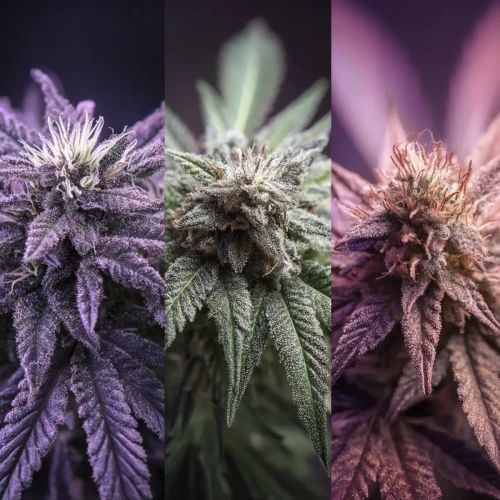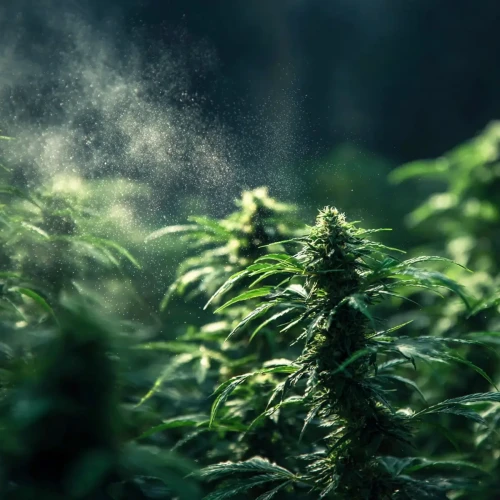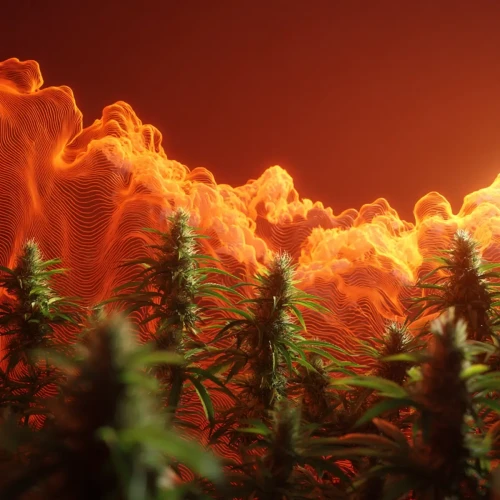As cannabis cultivation continues to grow around the world, growers of all kinds, from newbies who don't have much patience to experienced pros who want to harvest multiple times a season, are turning to fast-flowering cannabis strains more and more. But what is it about these strains that makes them finish quickly, and how are they different from the ones that take longer? Let's get into the details of fast-growing cannabis genetics, what makes them special, and the best ways to grow them so they grow quickly.
The Basics of Understanding Cannabis Flowering
To understand why some cannabis strains flower quickly, you first need to know how the flowering process works. Cannabis flowering is the stage when plants stop growing stems, branches, and leaves and start making the resinous flowers that we value for their medicinal and recreational uses.
- Photoperiod strains: Need changes in the light cycle to start flowering, usually moving to 12 hours of darkness every day.
- Autoflowering strains: Bloom on their own based on age, not light cycles.
Fast-flowering cannabis seeds usually include both specialized photoperiod strains bred to mature quickly and autoflowering varieties genetically engineered to bloom rapidly.
Genetic Influences: Indica, Sativa, and Ruderalis
The genetics of cannabis strains have a big effect on how quickly they flower. Three main species affect flowering time:
- Cannabis Indica: Originates from the cooler Hindu Kush mountains. Adapted to shorter growth cycles, flowering in 6–8 weeks.
- Cannabis Sativa: Native to equatorial regions with long growing seasons, taking 9–12 weeks to flower.
- Cannabis Ruderalis: From harsh Eastern European and Central Asian climates, naturally flowers rapidly regardless of day length.
Modern fast-flowering cannabis strains often combine the rapid growth traits of indica and ruderalis genetics, selectively bred to retain potency, flavor, and yield.


The Magic of Autoflowering Strains
Autoflowering strains changed cannabis cultivation by enabling harvest in very short periods. The autoflowering trait comes from cannabis ruderalis. These strains don’t wait for a light change to initiate flowering; they start blooming automatically after about 2–4 weeks of vegetative growth.
Flowering Locus T (FT) is the gene that triggers autoflowering. It acts as an internal “flowering signal” activated independently of light, pushing the plant rapidly through its growth phases.
Thanks to this genetic trait, autoflowering strains can go from seed to harvest in as little as 8–10 weeks, allowing multiple harvests per season even in regions with shorter growing periods.
Fast Versions of Photoperiod: Fast Hybrids
Breeders have also created “fast version” photoperiod strains. These hybrids retain the high yields and potency of traditional photoperiod plants but complete flowering in just 6–7 weeks, thanks to careful crossbreeding with quick-flowering indica genetics.
Ways to Grow Plants Faster so They Bloom Sooner
Genetics are the foundation, but growers can accelerate flowering with targeted methods:
- Indoor Cultivation: Precise control over lighting, temperature, and humidity creates ideal conditions for rapid growth and flowering.
- Hydroponic Systems: Deliver nutrients directly to roots in water, speeding plant development compared to soil grows.
- Light Stress Training (LST): Bending and tying branches to increase light exposure without overstressing the plant.
Managing Nutrition for Fast Growth
Fast-flowering cannabis strains need a precise feeding schedule. Nitrogen is critical during vegetative growth, while phosphorus and potassium become essential as plants transition into flowering.
An optimized nutrient plan ensures healthy flowering, maximizing bud size and potency without extending the flowering period due to deficiencies.


Environmental Conditions: Speeding Up the Growth of Plants
Ideal environmental controls further boost growth speed:
- Temperature Control: Daytime 21 °C to 27 °C, nights 18 °C to 21 °C
- Humidity Control: 40–50% during flowering to reduce mold risk and promote bud development.
- CO₂ Enrichment: Higher CO₂ levels accelerate photosynthesis for faster growth and flowering.
Pros and Cons of Fast-Flowering Strains
There are many benefits to fast-flowering cannabis strains:
- More than one harvest: Multiple crops per season.
- Less risk: Shorter cycles reduce exposure to pests, diseases, and adverse weather.
- Energy savings: Less electricity use with shorter growing periods.
However, growers should consider potential downsides, such as lower overall yields and, occasionally, slightly reduced potency compared to longer-flowering strains.
In conclusion, fast-flowering cannabis strains combine strategic genetics with precise cultivation management, offering efficient and rewarding harvests for a wide range of growers and environments.










